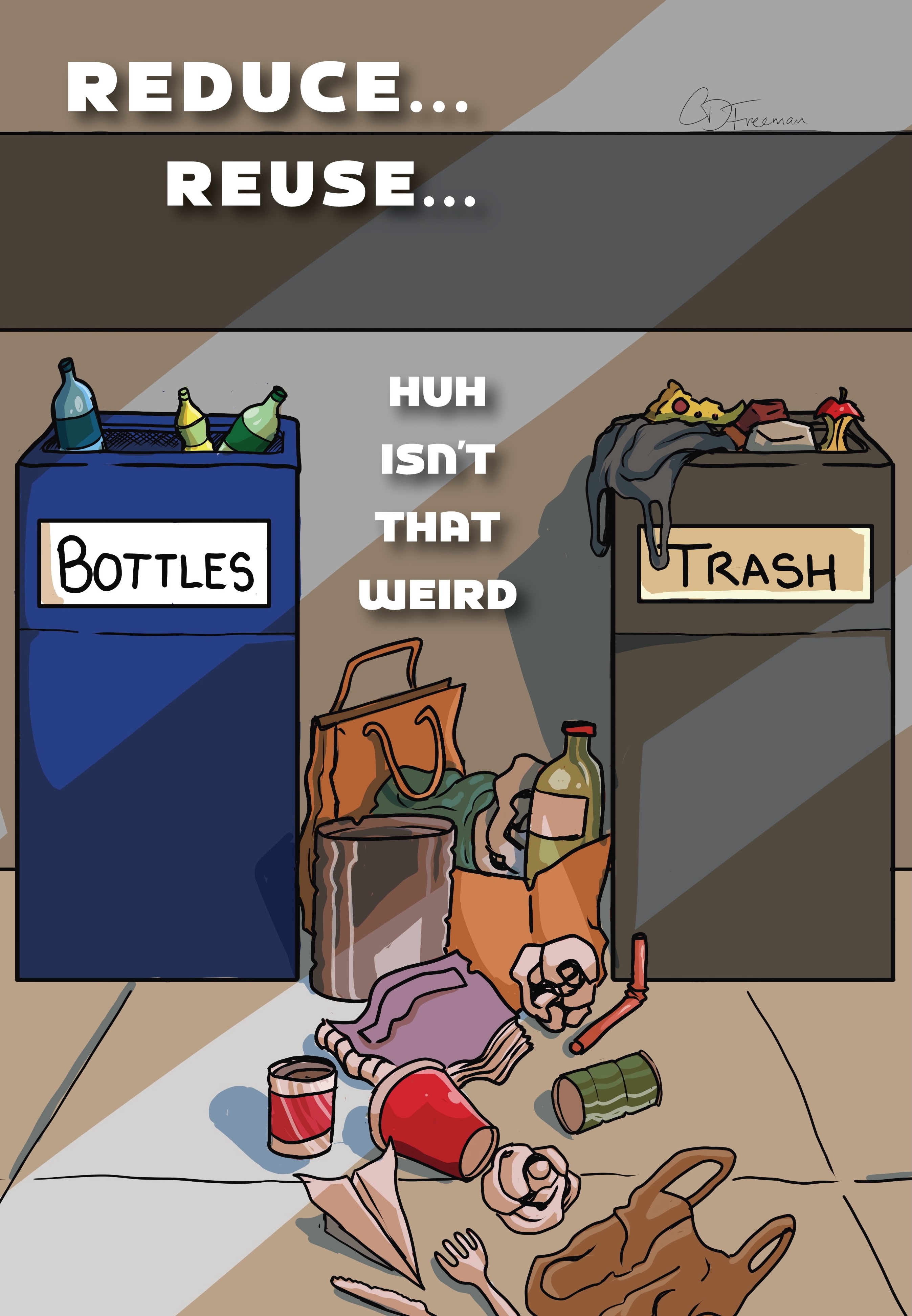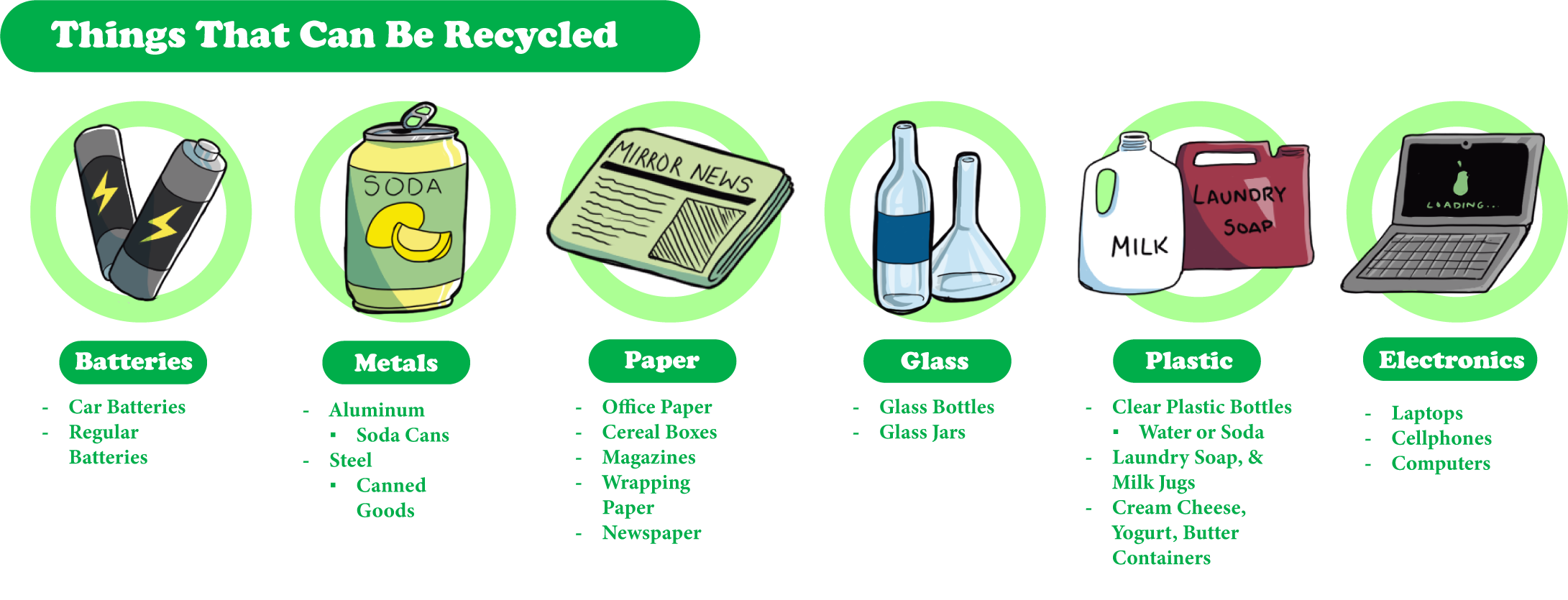Tackling Environmental issues at Henry Ford College

With climate change accelerating and its detrimental effects becoming increasingly difficult to ignore at both the national and international levels, colleges and universities have a responsibility to ensure they emit as little carbon as possible while promoting sustainability across their campuses.
While attention may be given to the likes of Ivy League institutions’ handling of climate change, including climate research, the often underlooked community colleges’ sustainability efforts are essential for the U.S. to meet the aggressive climate goals necessary to prevent irreversible damage. California community colleges are the national leaders of climate action, with many other community colleges across the country following their lead, including Henry Ford College.
In 2018, Mirror News staff writer Justin Randles reported on the newly developed Integrated Energy Master Plan (IEMP) and investigated the lack of recycling on campus, comparing it to recycling protocols at other local community colleges.
The IEMP is a 20-year partnership between HFC and an international company that develops sustainable buildings, Johnson Controls, which was approved by the HFC Board of Trustees in 2019 and strives to improve energy efficiency on campus by 60 percent, reduce greenhouse gas emissions by 50 percent, and improve water efficiency by 40 percent by the year 2040. The IEMP initiative invested $23 million for upgrades across campus, which included upgrades to the campus’s HVAC system, water fixtures, and lighting.
To HFC Director of Facilities, Reuben Brukley, IEMP is one of the accomplishments he is most proud of since entering his position in late 2019. “We cut the college’s carbon footprint in half in a very short period of time. That was substantive, and it makes me happy to know that we played a direct role in improving our environment,” he shared. However, seven years later, recycling remains an issue at HFC. In January 2020, Facility Services partnered with the Student Environmental Association (SEA) and Sustainable HFC to pilot a paper and plastic recycling program, installing a “recycling station,” which was three bins—one for paper, one for plastic, and one for landfill—in the Student & Culinary Arts Center (Bldg. M), and it remains there. Despite not being implemented permanently, this pilot program has not been discontinued. The college remains partnered with the waste management company, Green For Life (GFL), which collects from these bins. However, the program has never expanded.
According to Brukley, there were a few setbacks that contributed to this, one of which was unlucky timing. The recycling pilot program came to fruition only two months before the initial COVID-19 lockdown, which ultimately led to the project losing momentum before it could truly take off. Another challenge has been finding the space for recycling dumpsters on campus. While there is one dumpster outside the student center designated for recyclables, that dumpster had already been there before the pilot program.
“You would think that in all these acres, it would be super easy. We could just throw a dart, and we would find five different locations. And you can’t,” Brukley stated, “It’s either parking, or it’s a loading dock area, or it’s a means of egress.”
Even if space on campus were allocated for the dumpsters, the college would have to consider the large financial investment associated with renting dumpsters. Moreover, human error plays a role. “The issue is that it takes one person to go through and just kind of absent-mindedly throw a half-full coffee into your paper bin, and that is now landfill, there’s no getting that back,” Burkley said, “One would think that a pizza box, for example, is recyclable. It’s not because it has food remnants in it that they just want you to throw it away, right? It’s contaminated.”
Nevertheless, when asked about the feasibility of implementing a campus-wide recycling program, Brukley was optimistic, “I couldn’t tell you the likelihood, but I can tell you it’s hardly impossible, right? It’s definitely possible to do, absolutely.”
Another sustainability concern on campus is the upcoming $90 million Southeast Michigan Student Success Center (SEMSSC) project, which will demolish the Campus Safety (Bldg. N) building, renovate the Learning Success Center (Bldg. A), making it the new welcome center, and complete long overdue renovations on the aging Liberal Arts (Bldg. K) building. The project will be rolled out in five phases over the course of roughly three years, starting with the renovation of the A building in the Spring of 2026. According to the HFC website, the purpose of the construction project is to “create an up-to-date facility on the main HFC campus that will support teaching, learning, and services to advance student success,” that will also include new “classrooms, student service offices, student soft spaces, gathering spaces, and other amenities.”
The initial plan was to demolish the K building, the oldest building on campus, originally built in 1938, as it is arduous to repair, due to the obsolescence of its parts. The administration decided against it, in part, because of sustainability concerns. “There’s so much concrete involved in building K. I mean, we take it down to the columns. Of those columns are three feet by three feet. They’re massive pieces. We don’t want to put that in a landfill.” Brukley said. The SEMSSC project will closely follow the construction standards used for IEMP to maintain sustainability on campus.
Students at HFC also play a massive role in supporting the environment. Meka West and Reem Alhadad, President and Vice President of the SEA at HFC, spoke of the club’s tireless efforts to promote and spread awareness of environmentally friendly actions students can get involved with, such as volunteering at the rain garden, located near the science building, which members of SEA tended over the summer, weeding out invasive species with a focus on protecting milkweeds.
However, West and Alhadad admit that reaching other students has been a struggle, which they believe may stem from a lack of enthusiasm among today’s young adults surrounding environmental activism in general. “People used to be more environmentally conscious,” Alhadad expressed, “One thing I noticed, particularly what happened during the late 2010s to the early 2020s, a lot of doomerism happened.” Doomerism, a term coined by early internet users, can be defined as a pessimistic outlook on global issues, such as climate change, which results in inaction.
West and Alhadad reported finding a binder in the club activities room (Bldg. M) that dates back to 2008 and continues up to 2013; in the binder was thorough documentation of what SEA had been doing over those years, including pictures that showed off a high student membership to the club, which has since dwindled to five active members as of this semester.
Despite this, West, Alhadad, and other members of SEA remain dedicated to promoting sustainability on campus. “Even though there have been a lot of inactive members, there are still a handful of members who do really want a change,” West said, “Those are the people we have to do this for. That is how we’re going to get our message out there and make somewhat of a change, which is better than nothing.”
On Tuesday, December 2, SEA is partnering with the Jesus Revolution Club to host a free thrift event in the Student Center from 2:30-6 p.m. For more information on SEA and sustainability at HFC, visit: hfcc.edu/sustainability

